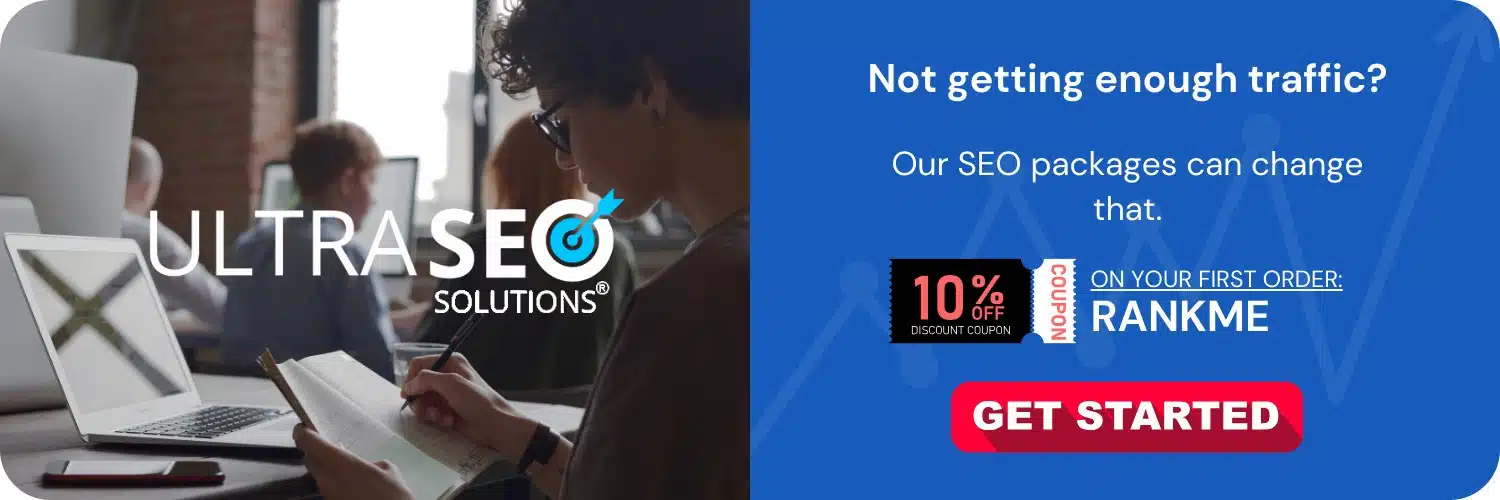
SEO best practices for a retail website center around optimizing the site for search engines to increase visibility and drive traffic. This involves employing a variety of strategies such as keyword optimization, creating high-quality content, improving site speed and user experience, ensuring mobile-friendliness, and building reputable backlinks. Each of these elements works together to help a retail website rank higher in search engine results and attract potential customers.
Understanding the Retail Audience and SEO Goals
Before diving into the specific tactics of SEO for retail, it’s essential to understand the unique characteristics of your audience and your SEO goals. Retail websites typically aim to convert visitors into customers, so your SEO strategy should be geared toward bringing in targeted traffic that is likely to engage with your products.
Defining Your Target Audience
Identify the demographics such as age, gender, location, and interests of your typical customers. This information will guide you in selecting the right keywords and crafting content that resonates with your audience.
Setting Clear SEO Goals
Define what you want to achieve with your SEO efforts—be it increasing traffic, boosting conversion rates, or raising brand awareness. Setting clear, measurable goals helps you keep your strategy focused and allows you to track your progress effectively.
Keyword Optimization for Retail Websites
Keyword research and implementation are the foundations of SEO. Retail websites need to rank for keywords that potential customers are searching for.
Finding the Right Keywords
Use keyword research tools to find terms that are relevant to your products and also have a significant search volume. Look for a balance between competitive broad terms and more specific long-tail keywords that might have a lower search volume but higher conversion potential.
Implementing Keywords Strategically
Once you’ve identified your keywords, it’s vital to use them strategically within your website’s content, including product descriptions, meta tags, and URLs. Maintain a natural flow in your content to avoid keyword stuffing, which can be penalized by search engines.
Creating High-Quality, Relevant Content
Content is king in the realm of SEO, and retail websites are no exception. High-quality content helps to engage users, keep them on your site longer, and can also earn you backlinks.
Product Descriptions and Guides
Write unique and informative product descriptions and create comprehensive buying guides or blog posts that provide value to your customers. This not only helps with SEO but can also improve the shopping experience for your customers.
Using Multimedia
Incorporate images, videos, and interactive content to enrich the user experience and increase the time spent on site, which is a positive signal to search engines.
Improving Site Speed and User Experience
Site speed is a pivotal factor for both SEO and user experience. If a retail site loads slowly, it could lead to higher bounce rates, which negatively impacts SEO rankings.
Optimizing Images and Videos
Compress images and videos to reduce their file size without compromising quality. This reduces page load times, which can improve rankings and user experience.
Streamlining the Site Structure
A clear and well-organized site structure helps search engines understand and index your site more effectively. Ensure that your navigation is intuitive and that your pages are structured logically.
Mobile-Friendliness is a Must
With an increasing number of users shopping on mobile devices, ensuring your retail website is mobile-friendly is essential for good SEO.
Responsive Design
Your website should have a responsive design that adapts to various screen sizes, providing a seamless browsing experience on smartphones, tablets, and desktop computers.
Mobile-first Indexing
Google now uses mobile-first indexing, which means it primarily uses the mobile version of the content for indexing and ranking. Therefore, your mobile site must be as optimized as your desktop version.
Local SEO for Retailers
For retail websites with physical locations, local SEO can drive foot traffic and create an online presence that complements the physical stores.
Google My Business and Local Listings
Ensure your retail business is correctly listed on Google My Business and other relevant local directories. Consistently update your business information, such as address, phone number, and hours of operation, for accuracy.
Collecting Customer Reviews
Encourage happy customers to leave positive reviews on your Google My Business profile and other review platforms. Genuine, positive reviews can boost your visibility in local search results.
Building Reputable Backlinks
Backlinks from reputable websites signal to search engines that your retail site is trustworthy and authoritative.
Content Marketing
Create compelling content that other websites want to link to, such as unique research, infographics, or in-depth guides on your products.
Outreach and Partnerships
Engage in outreach to related businesses or influencers for collaboration opportunities that could result in valuable backlinks.
Measuring and Analyzing SEO Performance
It’s crucial to regularly measure the performance of your SEO strategy and make data-backed decisions for improvements.
Utilize Analytics Tools
Use tools like Google Analytics to track your traffic, user behavior, and conversion rates. Observe which SEO tactics are driving positive results and adjust your strategy as needed.
Conduct Regular SEO Audits
Regular SEO audits help to identify issues that could be hurting your site’s performance, such as broken links, duplicate content, or crawl errors. Addressing these issues promptly can prevent declines in your rankings.
Finishing Thoughts
Effective SEO for a retail website requires a comprehensive strategy that touches upon various elements, from keyword research and on-page optimization to user experience and performance tracking. By focusing on providing value to your customers through informative content and optimizing your site’s technical aspects, you can improve your search engine rankings and drive targeted traffic that is more likely to convert. Remember, SEO is not a one-time task but an ongoing process that evolves with search engine algorithms and consumer behavior. Stay informed, be adaptable, and continuously refine your strategy to stay ahead in the competitive online retail space.“`html
Frequently Asked Questions
What is SEO and why is it important for a retail website?
SEO stands for Search Engine Optimization, which involves optimizing a website to improve its visibility in search engine results. For retail websites, SEO is crucial because it can drive more organic traffic, potentially leading to increased sales and customer engagement. Proper SEO practices ensure that your products are visible to users who are searching for them online.
What are the key SEO elements to focus on for a retail website?
For retail websites, the key SEO elements include keyword research and optimization, high-quality and unique product descriptions, image optimization, structured data markup, mobile-friendliness, user experience (UX) optimization, and building high-quality backlinks. Content freshness and ensuring the site is secure (HTTPS) are also important factors.
How can keyword research benefit my retail website?
Keyword research helps you understand the terms and phrases your potential customers are using to search for products you sell. By identifying and using these keywords throughout your website, especially in product titles and descriptions, you can improve your site’s relevance for those search queries and enhance its chances of ranking higher.
Why is mobile-friendliness important for a retail SEO strategy?
Mobile-friendliness is critical as more consumers shop on their mobile devices. A retail website that is mobile-friendly offers a better user experience, which can lead to longer visit durations and lower bounce rates. Moreover, search engines like Google use mobile-friendliness as a ranking signal, so it can directly impact your website’s SEO performance.
What is structured data, and how can I use it on my retail website?
Structured data is a standardized format for providing information about a page and classifying the page content. For retail websites, structured data can be used to give search engines more specific details about products, like price, availability, and reviews. Implementing structured data can enhance the way your product listings appear in search results, potentially increasing click-through rates with rich snippets.
How do product descriptions affect SEO?
Product descriptions are essential for SEO because they provide search engines with relevant content to index. Unique and high-quality product descriptions that include target keywords can help your product pages rank better. Avoid duplicate content, as this can negatively impact your SEO efforts.
What role do backlinks play in SEO for a retail website?
Backlinks are links from other websites to your site. They are crucial for SEO as they signal to search engines that others vouch for your content. For retail websites, obtaining backlinks from reputable industry sites, blogs, and directories can improve your site’s authority and may lead to higher rankings in search results.
Can social media impact my retail website’s SEO?
While social media signals do not directly impact search engine rankings, having a strong social media presence can influence your SEO indirectly. It increases brand awareness and can drive additional traffic to your website. Engagement on social media platforms can also lead to more backlinks and mentions, which are beneficial for SEO.
How often should I update my retail website’s content for SEO?
Regularly updating your website’s content signals to search engines that your site is relevant and up-to-date. For a retail website, this can mean adding new products, updating existing product descriptions, posting on a blog, or refreshing content on your homepage and other key pages. Aim to update content on a consistent basis to meet the expectations of both your customers and search engines.
Is it important to monitor the SEO performance of my retail website?
Yes, monitoring your SEO performance is vital to understanding what is working and where there is room for improvement. Use tools like Google Analytics and Google Search Console to track your website’s traffic, rankings, and overall SEO health. Regularly reviewing these metrics allows you to make informed decisions and tweak your strategy for better results.
“`






